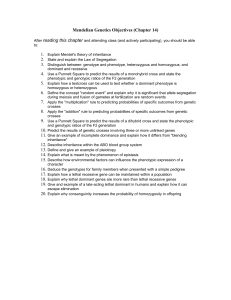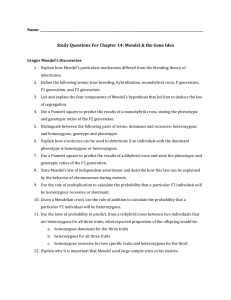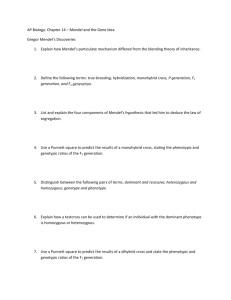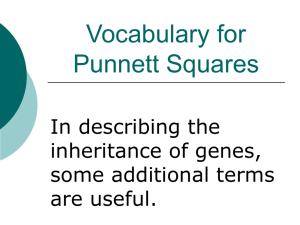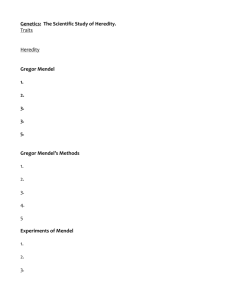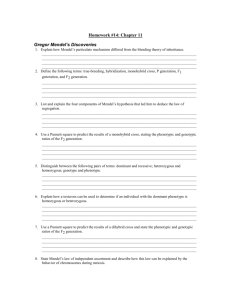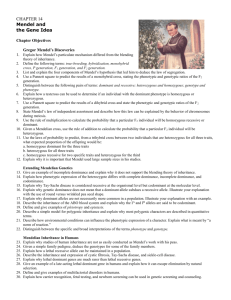AP Biology Chapter 13 Assignment
advertisement
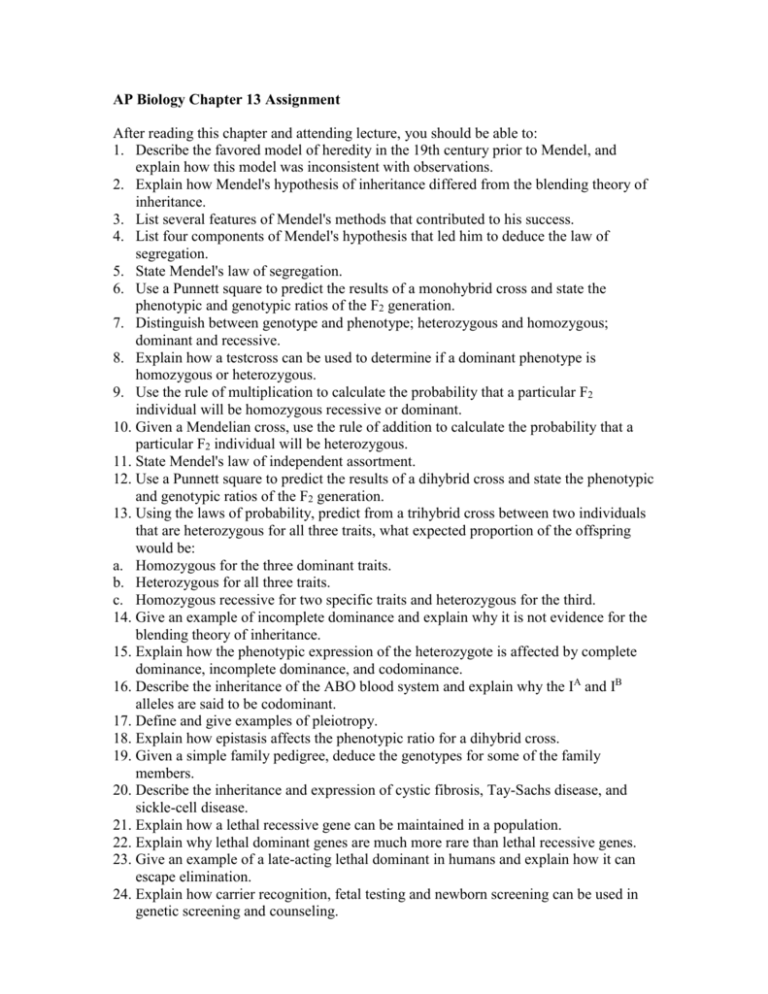
AP Biology Chapter 13 Assignment After reading this chapter and attending lecture, you should be able to: 1. Describe the favored model of heredity in the 19th century prior to Mendel, and explain how this model was inconsistent with observations. 2. Explain how Mendel's hypothesis of inheritance differed from the blending theory of inheritance. 3. List several features of Mendel's methods that contributed to his success. 4. List four components of Mendel's hypothesis that led him to deduce the law of segregation. 5. State Mendel's law of segregation. 6. Use a Punnett square to predict the results of a monohybrid cross and state the phenotypic and genotypic ratios of the F2 generation. 7. Distinguish between genotype and phenotype; heterozygous and homozygous; dominant and recessive. 8. Explain how a testcross can be used to determine if a dominant phenotype is homozygous or heterozygous. 9. Use the rule of multiplication to calculate the probability that a particular F2 individual will be homozygous recessive or dominant. 10. Given a Mendelian cross, use the rule of addition to calculate the probability that a particular F2 individual will be heterozygous. 11. State Mendel's law of independent assortment. 12. Use a Punnett square to predict the results of a dihybrid cross and state the phenotypic and genotypic ratios of the F2 generation. 13. Using the laws of probability, predict from a trihybrid cross between two individuals that are heterozygous for all three traits, what expected proportion of the offspring would be: a. Homozygous for the three dominant traits. b. Heterozygous for all three traits. c. Homozygous recessive for two specific traits and heterozygous for the third. 14. Give an example of incomplete dominance and explain why it is not evidence for the blending theory of inheritance. 15. Explain how the phenotypic expression of the heterozygote is affected by complete dominance, incomplete dominance, and codominance. 16. Describe the inheritance of the ABO blood system and explain why the IA and IB alleles are said to be codominant. 17. Define and give examples of pleiotropy. 18. Explain how epistasis affects the phenotypic ratio for a dihybrid cross. 19. Given a simple family pedigree, deduce the genotypes for some of the family members. 20. Describe the inheritance and expression of cystic fibrosis, Tay-Sachs disease, and sickle-cell disease. 21. Explain how a lethal recessive gene can be maintained in a population. 22. Explain why lethal dominant genes are much more rare than lethal recessive genes. 23. Give an example of a late-acting lethal dominant in humans and explain how it can escape elimination. 24. Explain how carrier recognition, fetal testing and newborn screening can be used in genetic screening and counseling.
